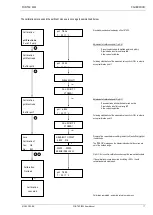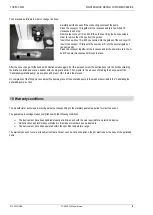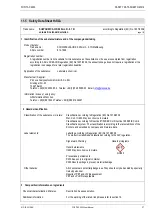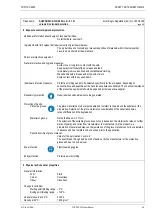
FOS/TAC 2000
PERFORMING A FOS/TAC MEASUREMENT
812-04.2015-EN
FOS/TAC 2000 User Manual
14
6.2
Preparing the device
6.2.1
Rinsing the hoses
If the device has not been used for a longer period of time, the hoses should be rinsed before measuring in order to make sure that
the hose system does not contain any major air bubbles. For this purpose, select the “Calibration” option from the main menu and
subsequently “Peristaltic pump”. Place an empty beaker (50ml) into the magnetic stirrer and press the OK button in order to start the
process.
When major air bubbles are no longer visible in the hoses, you can click the ESC key in order to stop the process. The rinsing
process stops automatically after two minutes. Press ESC to return to the main menu.
6.2.2
pH Electrode
First remove the protective cap filled with KCl solution from the pH electrode. Use distilled water in order to thoroughly rinse the
electrode and subsequently use cellulose tissue in order to carefully dry the electrode. The cleaning water can be collected in a
separate beaker.
Removing the protective cap
Rinsing the electrode
Drying with cellulose tissue
During transport or storage, KCl solution can leak from the protective cap and produce crystalline, white potassium chloride. This
salt layer has no influence on measuring capability and can be easily rinsed off with water.
Calibration
pH electrode
Perist. Pump
Measuring
Calibration
Stirrer
A/D Values
Calibration
Peristaltic
Pump with
< OK >
Calibration
active
__________
OK
OK
OK
Summary of Contents for FOS/TAC 2000
Page 2: ......
Page 4: ......
Page 21: ...FOS TAC 2000 APPENDIX 812 04 2015 EN FOS TAC 2000 User Manual 21 11 Appendix Appendix ...
Page 22: ......















































